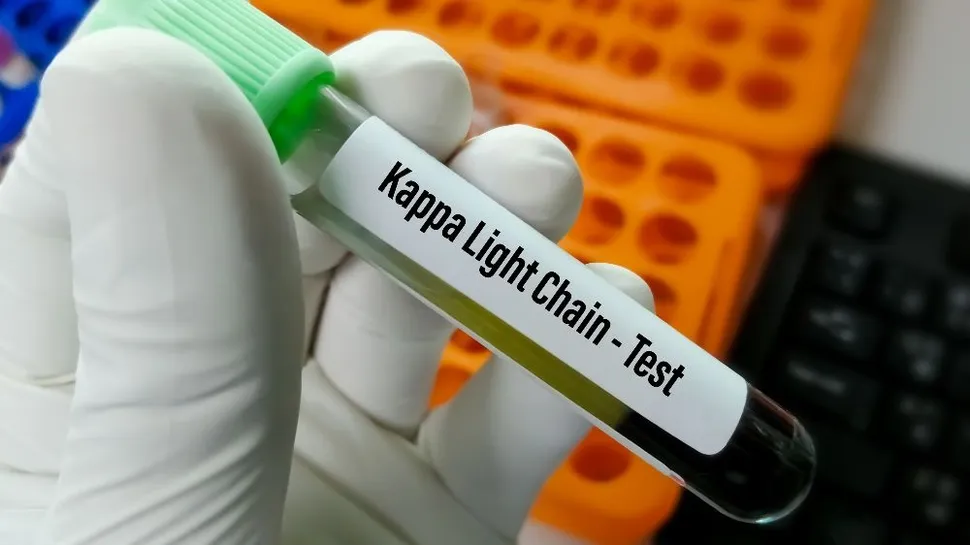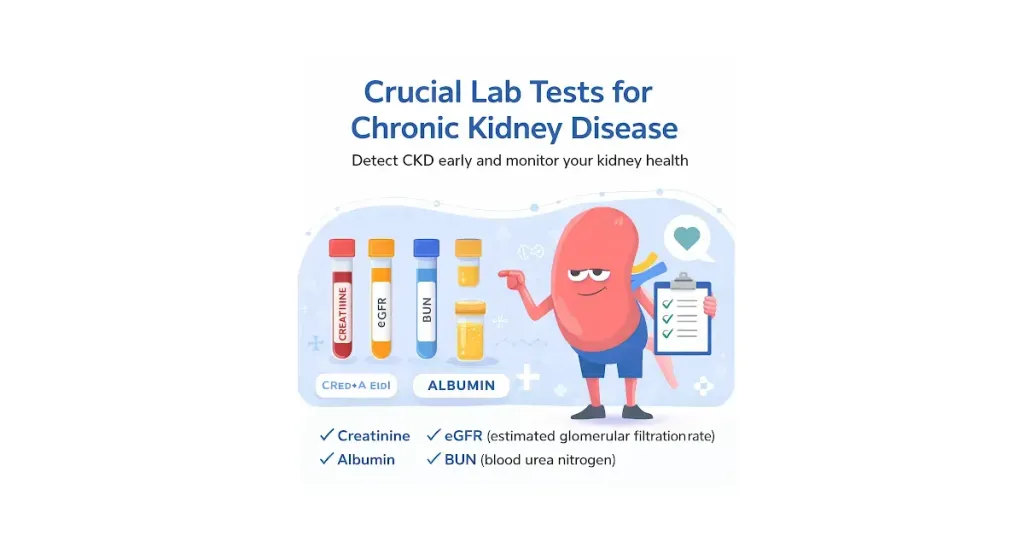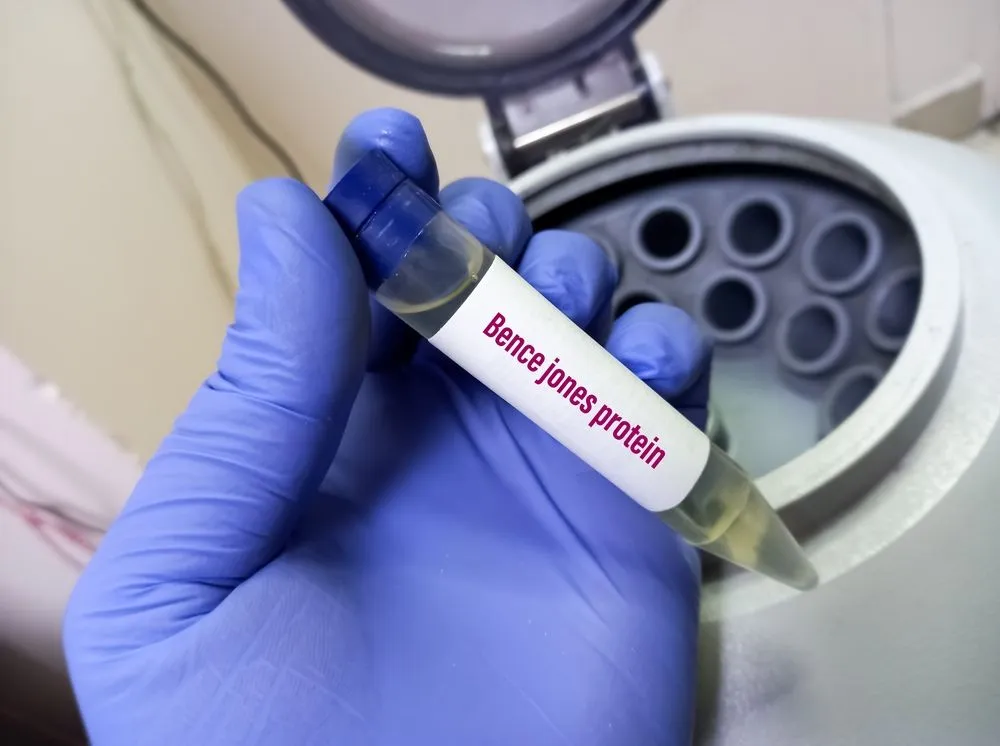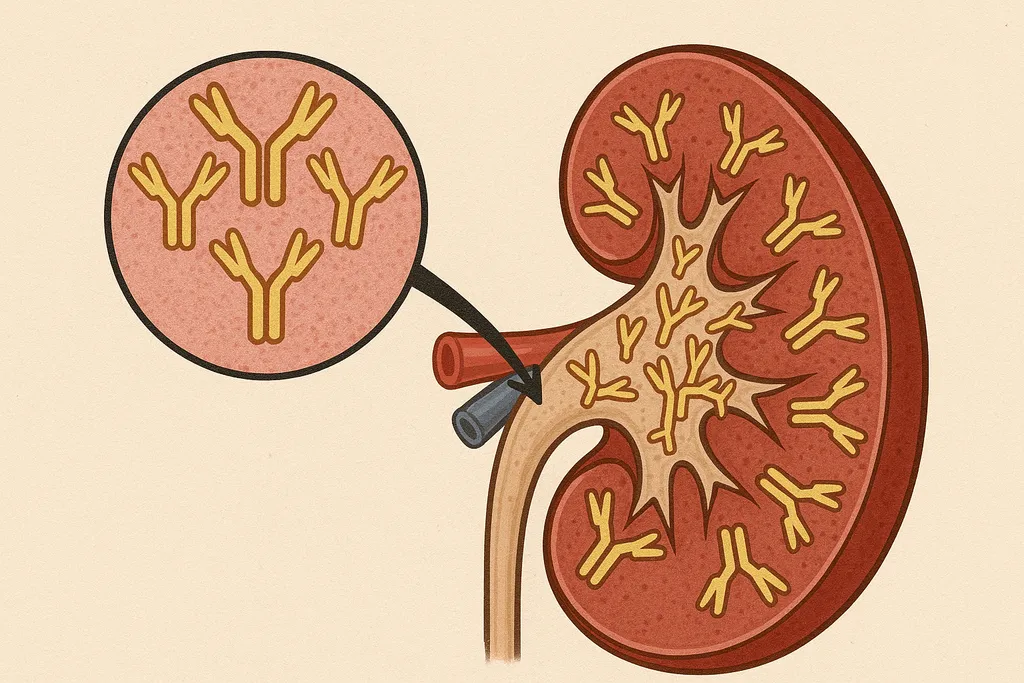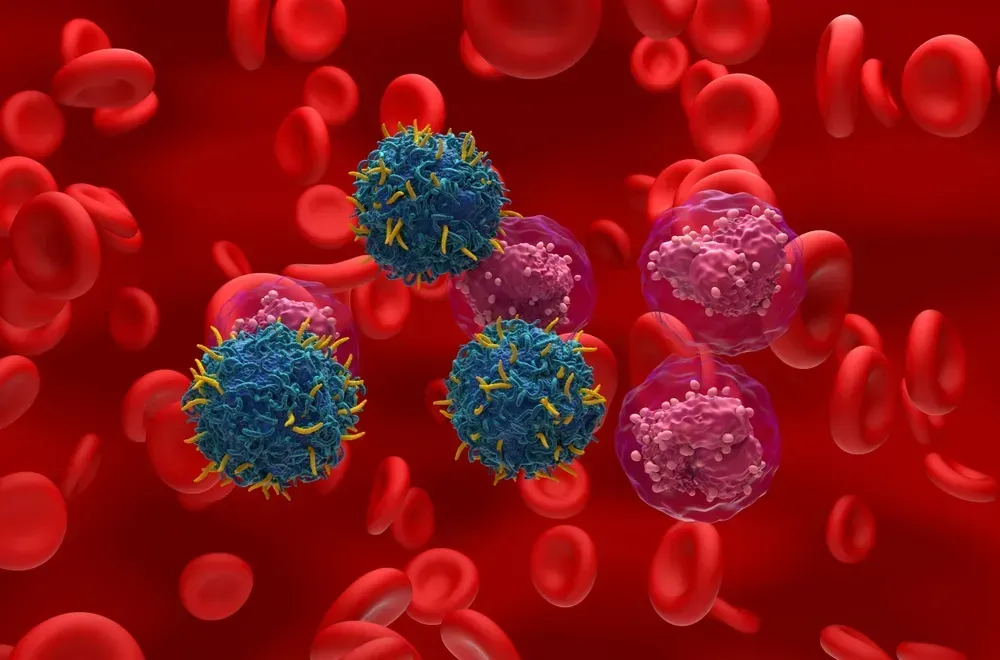Plasma cells come from B cells, which circulate in the body until they find a specific substance. Then, they go into a maturation process and become plasma cells. These plasma cells live in the bone marrow and produce antibodies (also called immunoglobulins) that fight various infections, among other things, such as cancer.
In normal circumstances, plasma cells produce antibodies compromising two parts: heavy chains and light chains. These two parts are combined together and secreted into the blood and other places in the body. In addition, plasma cells secrete a small number of light chains that are not attached to the heavy chain (also called free light chains).
In myeloma, plasma cells grow out of control in the bone marrow, crowding out the other cells of the bone marrow. Also, this abnormal plasma cell population (monoclonal plasma cells) secrete excessive heavy chains and light chains (monoclonal protein or m-spike), including the complete immunoglobulin and/or the free light chains. Consequently, other immunoglobulins secreted by normal plasma cells are reduced, leading to a deficient immune system.
What Are Light Chains?
There are two types of light chains: kappa and lambda. If a patient has kappa myeloma, their doctor will watch for a rise in the kappa numbers. Likewise, the lambda number will be watched if a patient has lambda myeloma. This can be measured by the Free Light Chain Assay test on a blood or urine specimen. This balance of kappa and lambda together is called the kappa/lambda ratio, which can also indicate a change in levels of disease. "The ratio or proportion between the kappa and lambda light chains indicates an excess production of one chain over the other, and therefore can be used as an indication of disease progression or remission," said Dr. Christina Gasparetto of Duke University.
What Are Heavy Chains?
There are five types of immunoglobulins: IgG, IgA, IgM, IgE and IgD. Approximately 60-70% of patients have IgG myeloma, and about 20% have IgA myeloma.
Heavy and Light Chain Combinations
In total, there are 10 variations of these immunoglobulins for myeloma patients: IgA kappa, IgG kappa, IgM kappa, IgD kappa, IgE kappa, IgA lambda, IgG lambda, IgM lambda, IgD lambda, and IgE lambda.
Presence of Heavy and Light Chains
There are instances where patients can lose the heavy chain and have "light chain only" myeloma. In these cases, the disease can only be measured by checking the free light chains and the free light chain ratio. There are also instances where patients no longer produce light chains in the blood and their disease must then be monitored through a bone marrow biopsy.
Does The Type of Light Chain Matter for My Prognosis?
Generally, myeloma specialists do not treat patients differently based on their heavy or light chain myeloma type. There is research showing that lambda myeloma may be at higher risk than kappa myeloma. The serum-free light chain test can be used to determine light chain levels of disease, so patients will want to track their light chain numbers.
Additional genetic testing of a patient's myeloma cells can be done to determine risk based on common genetic myeloma features.
Learn more about kappa and lambda light chains and multiple myeloma:
Unlock Insights From your Records Today by Creating a Free HealthTree Account
HealthTree Patients get exclusive access to unrivaled patient advocacy and education tools that can help change their outcomes. Unlock courses, lab tracking, treatment options, membership to our patient communities and so much more!
My lab results include kappa and lambda light chain ratios
